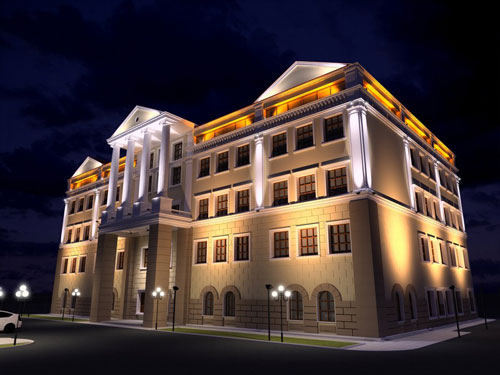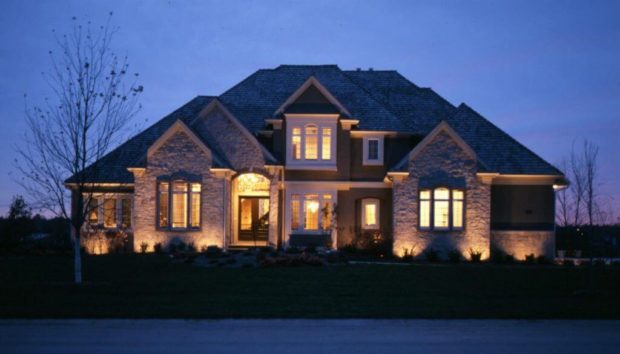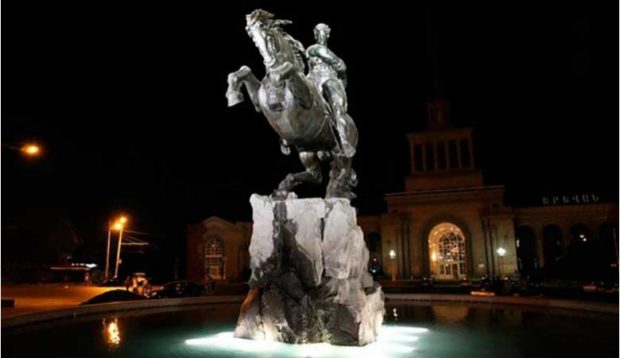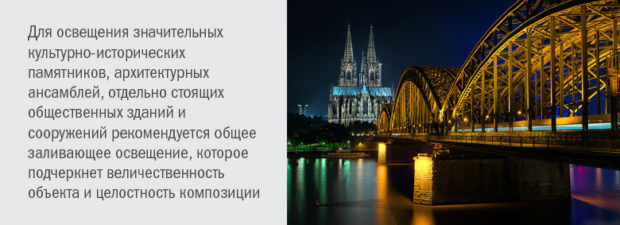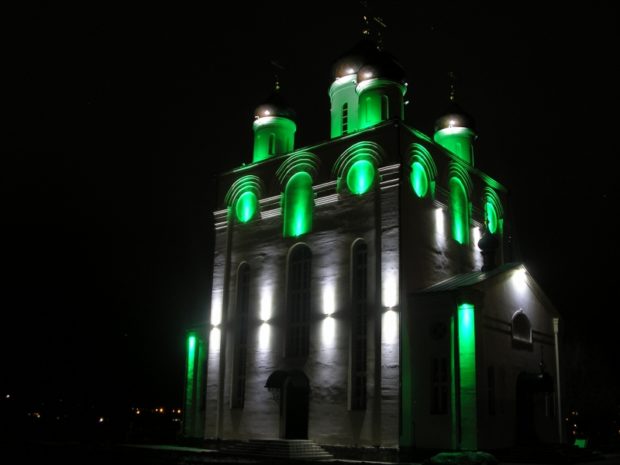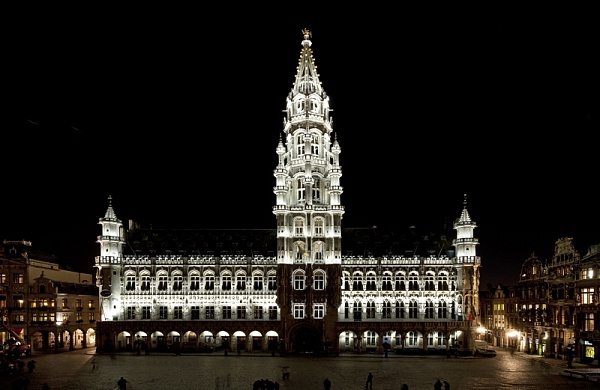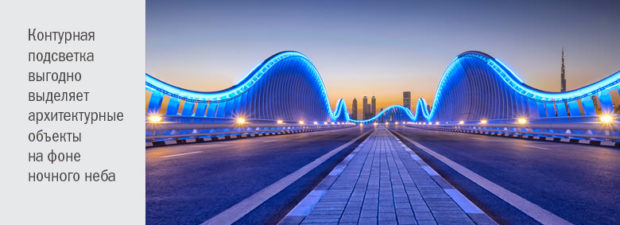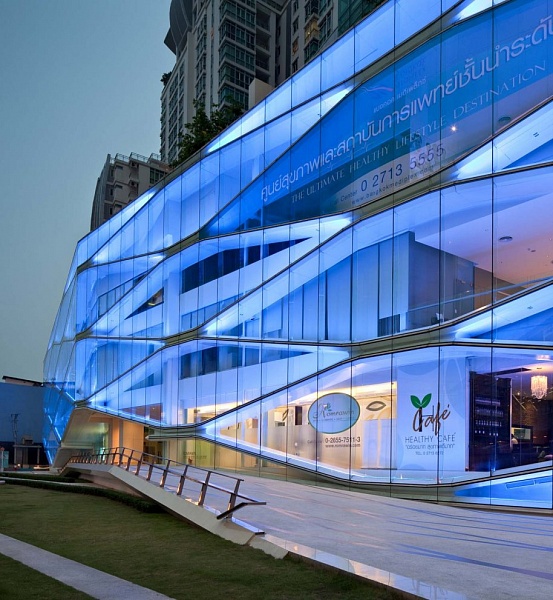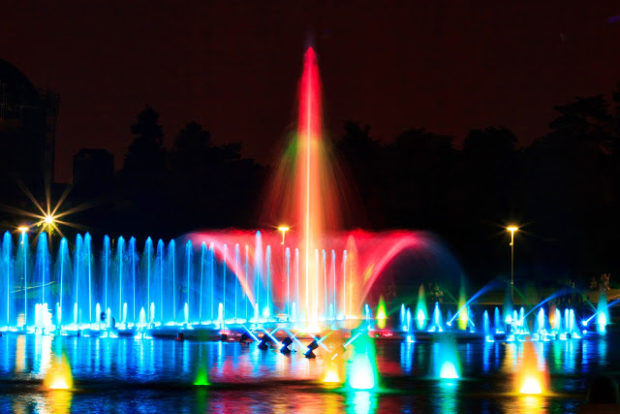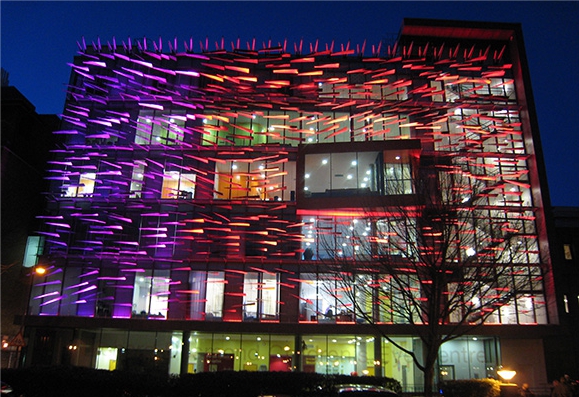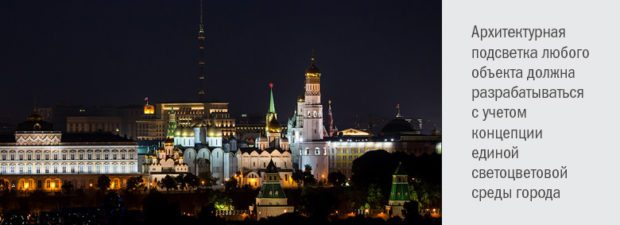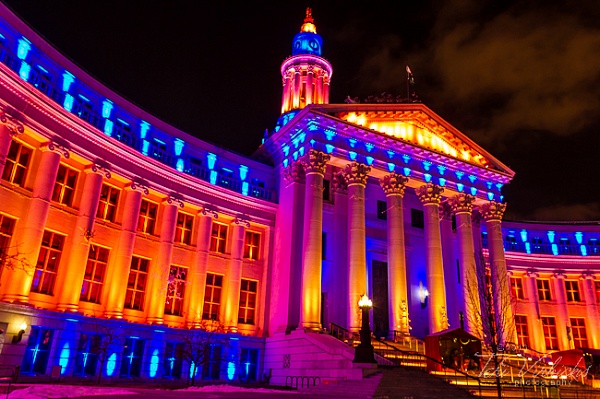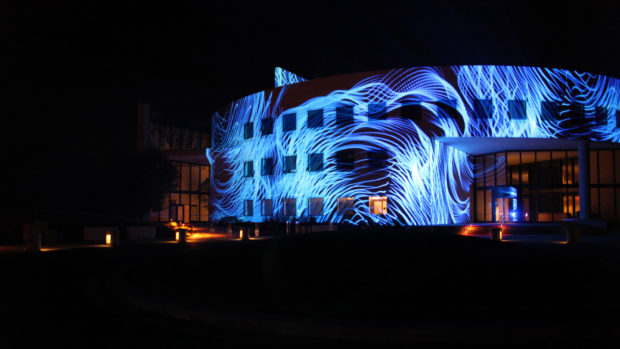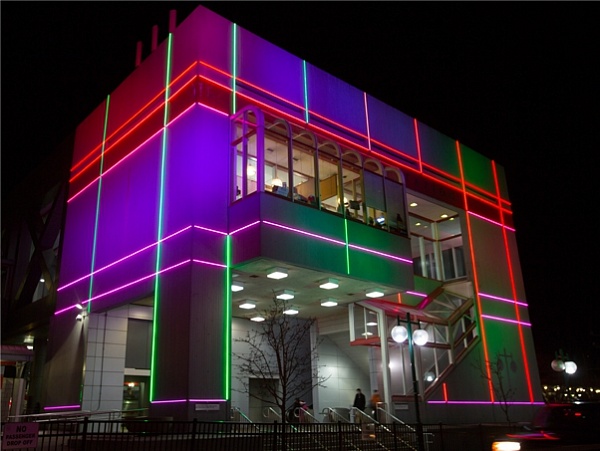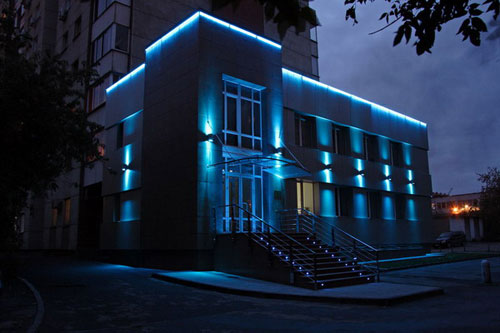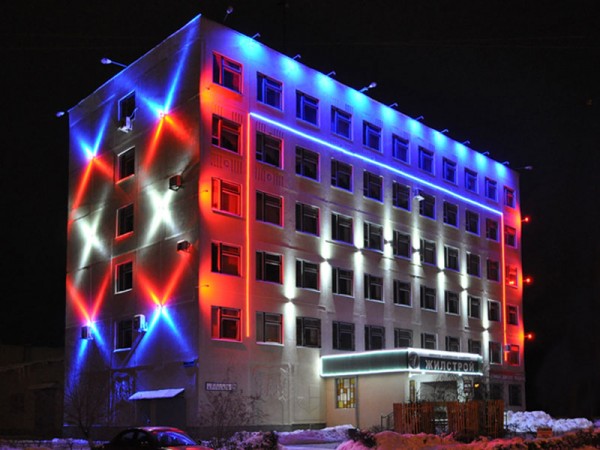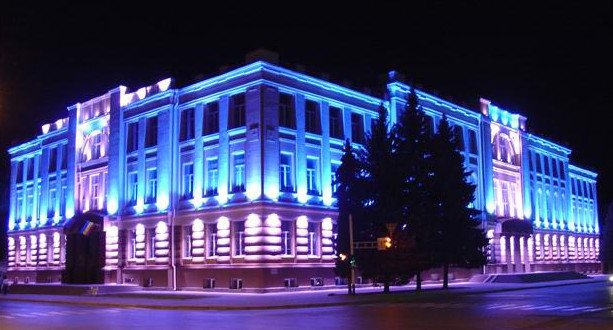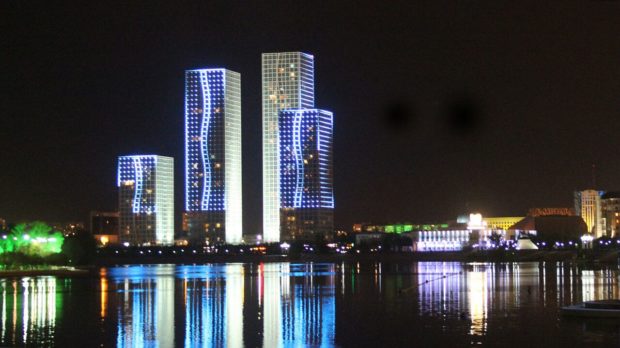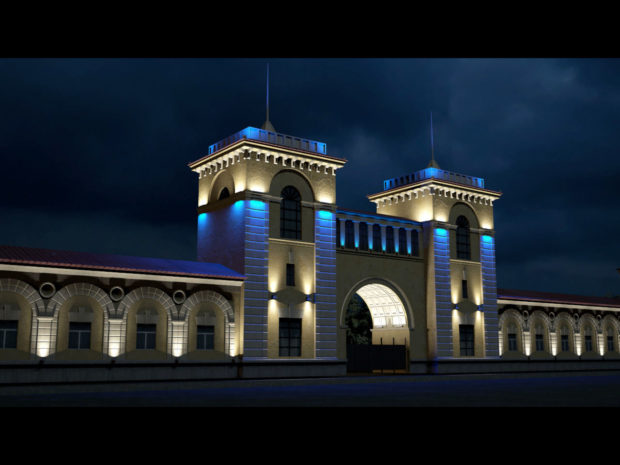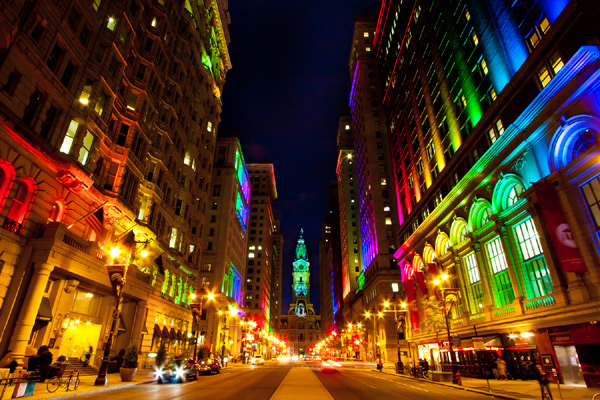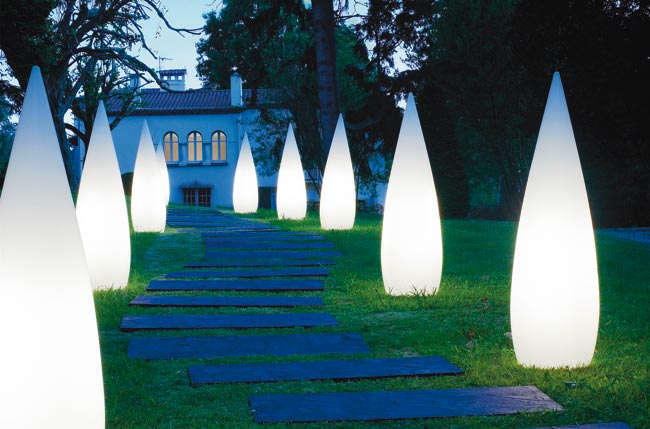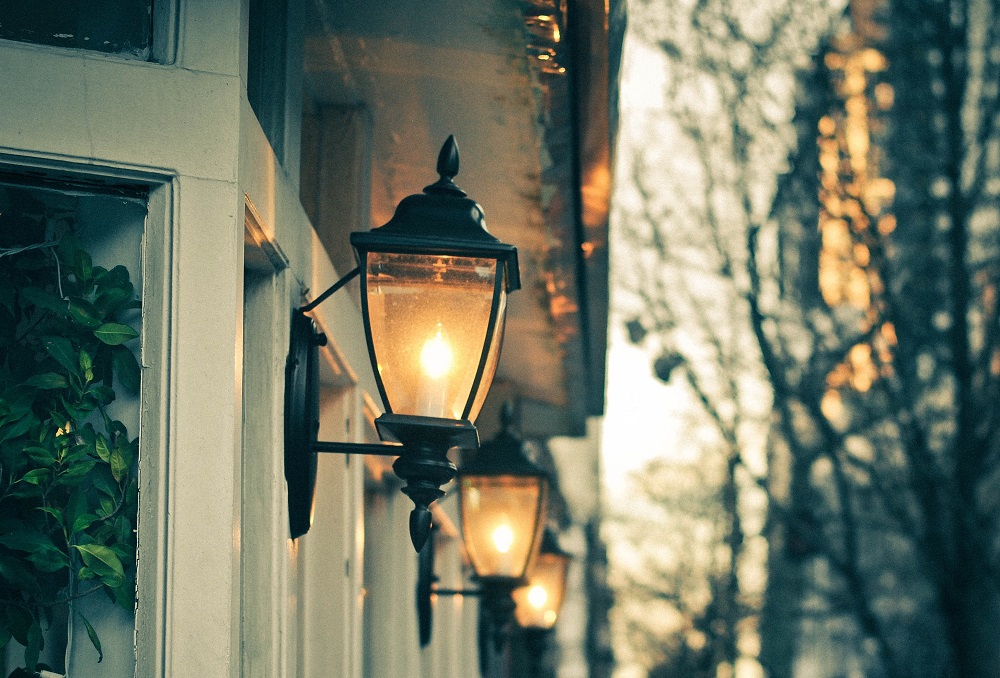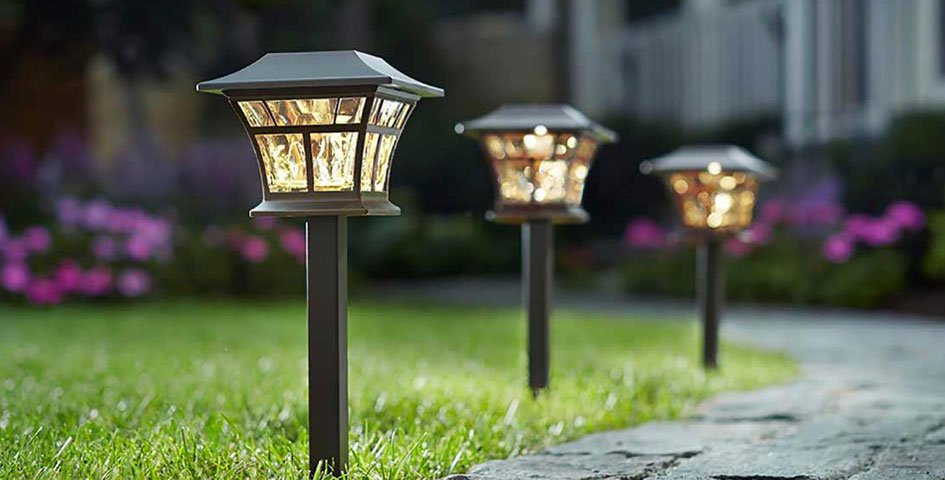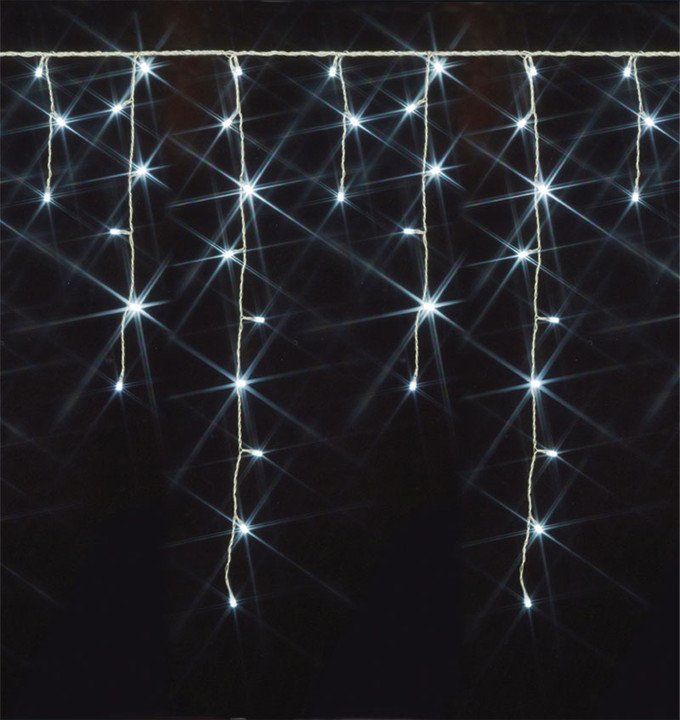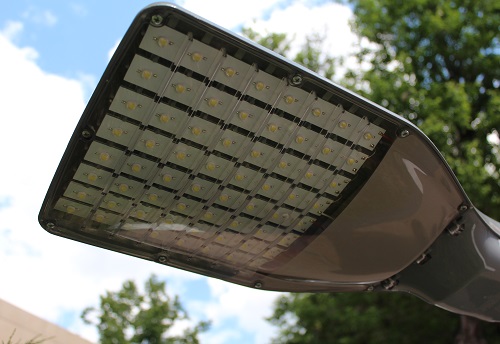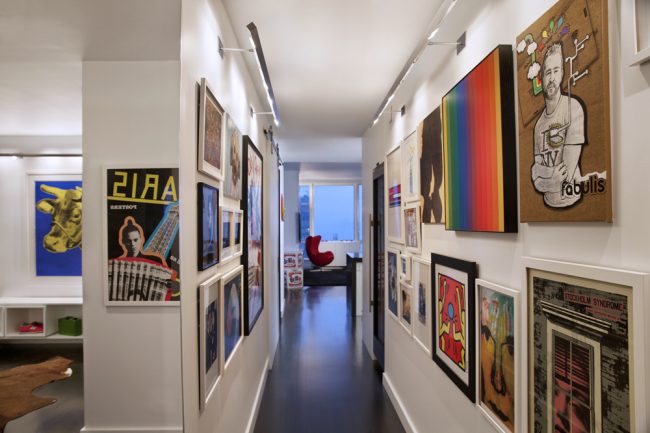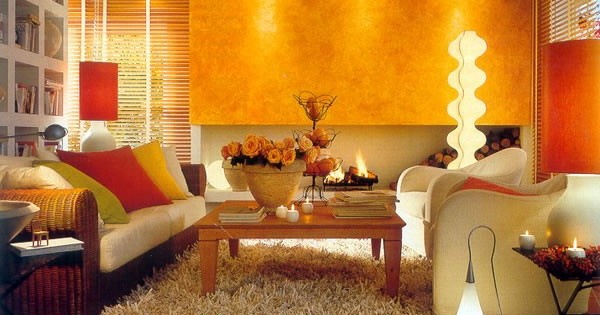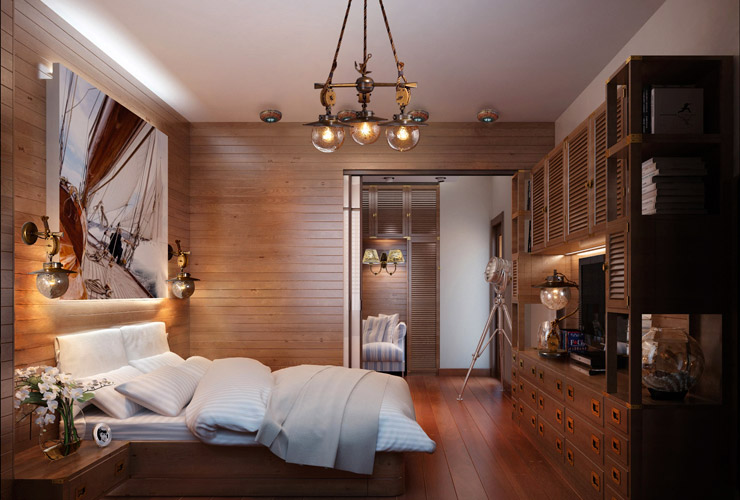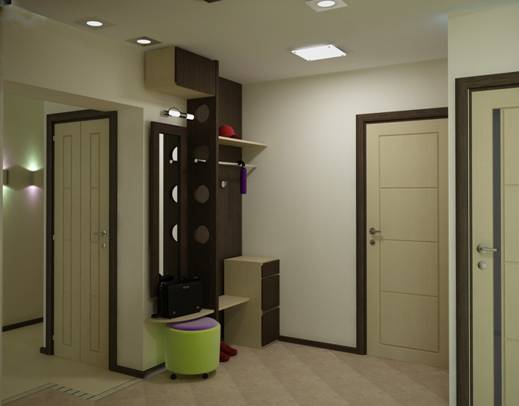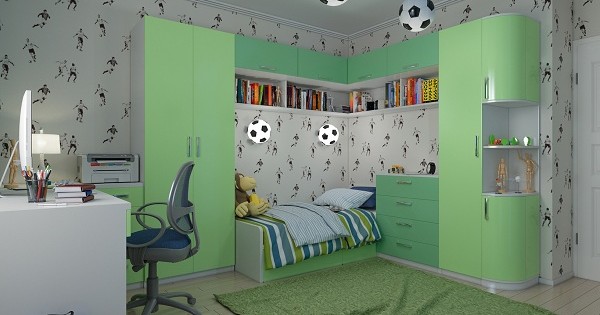7 tips for choosing architectural fixtures
Artistic illumination of an architectural structure is one of the best ways to make an object bright and memorable. This technique is actively used to give a unique image to various commercial or public buildings. With the help of lighting, you can successfully distinguish, for example, a specific shopping or entertainment center from many others, which will definitely attract more visitors. In cities where the tourism sector is actively developed, backlighting is used to create spectacular light compositions in the dark, highlighting architectural monuments and large structures. This can be either a small sculpture or the facade of an old house, which refers to historical monuments. However, the greatest impression, of course, is made by large-scale buildings, for example, bridges or skyscrapers, whose greatness is emphasized favorably by special lighting. To create such beauty, you must be a professional in the field of lighting design and understand the types of lighting. You also need to understand that for each specific project it is necessary to select different types of lighting devices. In this article we will tell you what backlighting methods are, give architectural lighting tips and consider their main types.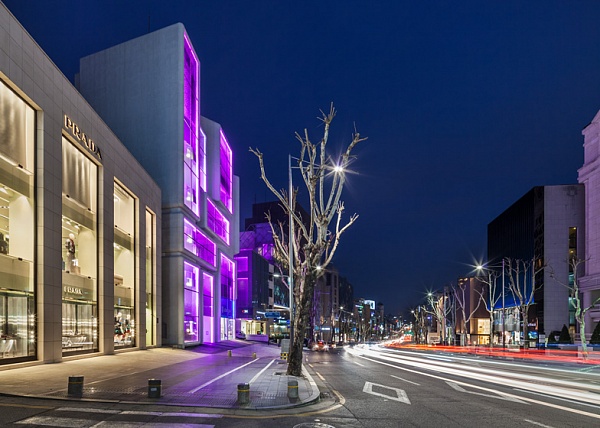
1. Directions of architectural lighting
The modern way of life dictates its own rules for many areas of our lives. This also affected such a seemingly simple thing as architectural lighting. It is impossible not to notice that since the beginning of the 19th century, lighting was first used for decoration building facades, this direction has grown rapidly and developed. Today it has grown into a real art, rightfully occupying a separate niche in the field of design. In fact, working with light is very complex and requires a specialist high level of professionalism. He should not only have an understanding of working with light and shadow, but also be able to create economically and practically profitable projects. Currently, lighting designers distinguish three main areas of artistic lighting:
- Facade Lighting urban buildings - used to create a beautiful look of the city at night. If you mean the illumination of various commercial buildings, then in addition to the spectacular look, the goal is to attract as many visitors to the institution as possible. Whether it is an entertainment center or a marketplace;

- Private house lighting, cottages, suburban buildings - used not only if the building has an interesting configuration and unusual facade, whose beauty I would like to emphasize to the owner, but also for security purposes. Indeed, it is much more difficult for an attacker to penetrate a well-lit object unnoticed;

- Lighting of various related objects to cultural heritage. For example, statues, monuments, small and medium architectural forms. Used to attract interest in a particular historical monument and the formation of the contemplator of the correct perception of the picture.

Difference between these directions lies not only in the size of the object and its location, but also in the types of light sources used. For example, when organizing a lighting system for country cottages, preference is given LED or small halogen lamps. And in other cases, it is necessary to take care not only of aesthetics, but also of economic benefits due to the constant increase in electricity tariffs. Therefore, LEDs are gradually replacing conventional lamps.
2. The main techniques of architectural lighting
Before you begin to consider the various types of fixtures that can be used to organize a lighting system, you need to understand what are types of architectural lighting. Depending on the type of object and the desired result, there are 7 ways to highlight:
- Total or flood - it is used if necessary to isolate a separate object or structure, including large cultural monuments, churches or cathedrals. This type of illumination can be realized using RGB, white and amber floodlights for artistic lighting of buildings. The method allows to fully convey the significance and scale of the object, as well as to ensure its holistic perception. The whole object is highlighted and some part of the adjacent territory. However, it must be understood that with floodlighting, spotlights are installed directly in front of the building, at some distance from it or on poles and sent to the facade. Therefore, part of a rather bright light will constantly appear through its windows, which can bring significant the discomfort. Because of this, it is not recommended to choose a similar lighting system for buildings where people are constantly located, for example, for hotels or large office centers;

- Local Highlighting - used to highlight any single element or small area. This can be, for example, a beautiful cornice or balcony, frieze, window opening of an unusual shape or arch. This technique is designed to draw attention to the spectacular details, which otherwise might go unnoticed. To implement such lighting, wall lamps of small sizes and low power are most often used, which are mounted directly near the illuminated object. May also apply linear led lights, which are much smaller in size than the usual fluorescent lamps;

- Background or silhouette illumination - it is realized with the help of powerful floodlights that are installed in front of the object at a certain angle. Their task is to create a luminous background, which will become an advantageous basis for effective and clear identification of the contours of the facade. Most often, this type of lighting is used when necessary to emphasize the grandeur and beauty of various castles or theaters, buildings with columns. The contours become clear, graphic and pronounced;

- Contouring backlighting - realized with the help of linear-type LED lamps. From the name it is clear that the lighting devices are installed along the contours of a particular object and is advantageous emphasize non-standard silhouettes;

- System "Light facade" - It is used to highlight modern multi-story business or shopping centers. In principle, it can be applied to any objects whose facades made of plastic or glass. The difference of this system is that the lighting devices are installed behind the glass, and their light flux is directed to the window opening in such a way that a static or dynamic effect is created. The luminaires themselves can be either monochrome or RGB;

- Color dynamic illumination is realized with the help of controlled spotlights, LED rulers, spotlights and other lamps.This backlight system can be used in all of the above types, that is, it can be both flooded and contour, etc. Its difference lies in the fact that the controlled luminaires can operate in different modes - with smooth damping and increasing brightness, with a change in the color spectrum and color synthesis, which allows you to achieve amazing effects. Such illumination is widely used to create a special design of fountains;

- Backlight in the form of color graphics - It is also created using controlled lights that can change the color of the glow depending on the brightness used. By adjusting this parameter, interesting color patterns are created on the facades of buildings, which can consist of solid luminous lines or of individual points.

3. What to consider when developing a lighting system?
The creation of a lighting system for an object should begin with development of a design project, which not only allows you to have a clear idea of the final result of the work, but also to calculate the required number of fixtures and choose the most suitable type of equipment. To create a backlight that can really effectively and expressively emphasize the beauty of an object, it is necessary consider the following factors during project development:
- The location of the object and its role in the overall urban picture. The illumination of a residential building will be significantly different from the illumination of an entertainment center or an old cathedral;

- Its size, texture, color of facing materials and style of execution. Belonging to a building architectural style by default, it determines the style of the lighting system itself, which in no case should contradict it;

- Availability or lack lighting of neighboring buildings and facilities that may affect the outcome. Even glare from the most ordinary streetlights can be an obstacle that must be skillfully smoothed out;
- The distance from which it is supposed to observe the object and viewing angles. Taking into account these facts, it will be possible to create a backlight that in the most favorable light will emphasize the dignity of the object from all visible sides;

- The ability to install one or another type of fixtures. Due to the proximity of the object to the sidewalk or roadway, or other object, it is not always possible to use equipment such as, for example, floodlights.
You also need to ask if your city exists. the laws or rules which regulate order and organization of street lighting. For information - in Moscow in 2008 the law "On the concept of a unified lighting environment of the city of Moscow" was adopted, which has clear recommendations and restrictions not only regarding the arrangement of outdoor lighting, but also the placement of outdoor advertising. 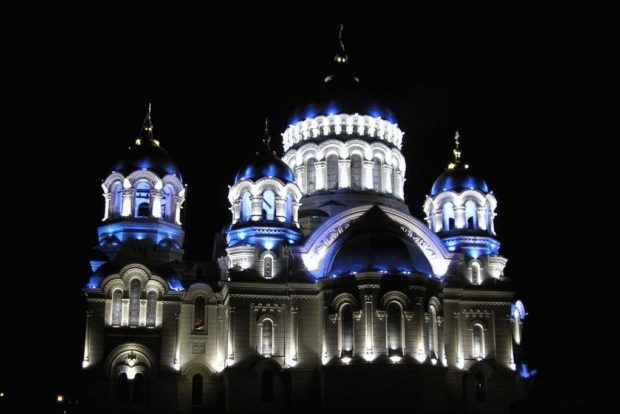 So, far from all buildings are allowed to highlight using floodlights.
So, far from all buildings are allowed to highlight using floodlights.
4. Requirements for architectural lighting
Since the luminaires are mostly located in front of or on the facade of a building or other object, they are advanced special requirements:
- To ensure stable operation of the device and its protection against premature failure, it is better to choose models with a degree of protection against moisture of at least IP 65
- The operation of the lamp should not be particularly difficult or require constant human participation. Indeed, sometimes luminaires are located at a considerable height, and constantly getting to them in order to correct or adjust something can be dangerous;
- Lamps must possess sufficient power and brightness so that the implementation of the planned project is fully successful;
- An important role is played by the economic side. The device must consume the minimum amount of electricity, but at the same time meet the declared power characteristics.This can only be achieved by using expensive equipment, the cost of which, of course, initially can push away, but with simple calculations, the economic effect will become obvious;

- The installation of lighting devices should also not be too abstruse or cause any difficulties;
- If the project involves the installation of floor lamps, choose models with shockproof glass;
- All devices must be resistant to sudden changes in temperature and maintain performance and color constancy at both high and low temperatures;

- In addition, the fixtures must be resistant to mechanical stress;
- Durability appliances should be calculated over several years;
- Possible color gamut should not be limited to several basic shades;
- Also, the lamp should ideally have minimum dimensions so that in the daytime, when the device itself is visible, it does not spoil the appearance of the object;
- Relatively small should be the weight of the device, the mount of which is wall-mounted.
5. Parameters of fixtures
The determining parameters when choosing lighting devices is angle them radiation and the form itself ray. Depending on the value of the angle, the following types of lamps are distinguished:
- At point models of the flooded type, the angle of illumination reaches an indicator of 60-120 degrees. Most often they are used to highlight decorative elements of facades, such as bas-reliefs or stucco moldings, stands, pilasters;

- Linear floodlights have a radiation angle of 45-120 degrees. It is advisable to use them to highlight architectural elements of decent length, for example moldings, cornices, fronts or contour lighting;
- Narrowly targeted considered fixtures having an angle of illumination of 8-45 degrees. The most successful is their use for local illumination of elongated objects that do not differ in significant width. For example, to highlight narrow window openings, stately columns or pilasters.
Another important parameter is type of power supply lamp. The following options are distinguished:
- Low current or in other words, low-voltage luminaires - operate at low voltage indicators - 12 or 24 V. For their stable operation and protection against overheating, it is necessary to use a step-down transformer that will convert the voltage from the network to the specified values and ensure its constancy. Low-current devices have the greatest operational resource and can work stably for ten years. And with a constant mode of operation, which does not exceed 8 hours a day, the resource may exceed 10 years. When using such equipment, it is necessary to provide special conditions for the placement of the power supply, since it is a vulnerable element. This is the main disadvantage as it’s not always possible to fix the power supply inside the building or on its facade, as required by the norm. You should also pay attention to the indicators of dust and moisture resistance of the equipment case;

- More unpretentious and simple in terms of installation work are considered network luminaires that can work directly from a 220 V network without the need for conversion or undervoltage. They only require bringing the current source directly to its mounting location.
6. Types of architectural lighting
We have already said that the development of a design project for a lighting system makes it possible to select the optimal types of lighting fixtures for each specific task. In this regard, there are a large number of the most different both by installation method and by type of lamp used fixtures that will allow to realize the most extraordinary ideas.
- To organize the external illumination of the facades of buildings of different purposes, the adjacent or separate territory, advertising banners or billboards, objects of architecture in the form of monuments or sculptures and even fountains, fixtures in the form of spotlights are often used solar batteries;

- To create a spectacular illumination of the contours of objects of complex configuration, for accent lighting of individual parts of facades or to create outdoor advertising, it is widely used neon backlight;
- For highlighting tall objects, the most profitable from an economic point of view are luminescent fixtures;

- Very popular are lamps based on LEDs which are economical and have a variety of colors.
IN depending on the installation method fixtures can be made in the form of:
- Ground posts - LED or halogen;
- Pendant lights based on LEDs;
- Fixed wall sconces that are used to highlight a specific part of the facade;
- Built in open ground;
- Built into the facade of a building or other structure;
- Wall-mounted appliances with the ability to adjust the angle of rotation and tilt of the light beam.
7. Tips for choosing lighting equipment
For the sake of economy, many consumers try to do without the help of professionals and organize their own lighting system for their facility. I would immediately like to note that in a similar way, an idea can be realized at an acceptable level only in small areas. And then, you run the risk of facing such common mistakes as:
- The formation of light spots;
- Inexpressiveness final work in connection with the use of lamps with the same shade of light;
- The lack of the desired effect of perception. Indeed, the key point in creating the illumination of an object is not the object itself, but the person who will contemplate it.

If nevertheless you decide on an independent experiment, then we recommend that you stick to the following recommendations when choosing fixtures:
- Define its purpose;
- Preferred type of lamps;
- The best way to install or mount equipment;
- Lamp design;
- Is it necessary in this case to change the angle of the lamp? If yes, then choose devices with a movable lampshade;

- Depending on the climate in which the equipment will be operated, pay attention to the moisture protection class;
- The power of the lamp should be sufficient to provide the desired effect;
- Depending on the type of object, it may be necessary to use minimum size devices that will not spoil the view in the daytime;
- The choice of a particular type of luminaire should be economically justified;
- The service life should be sufficient so that you have the opportunity for a long time to forget about the need to replace a failed element.

And remember that a well-designed and planned lighting system can present any object in a completely new, more profitable and interesting light.

